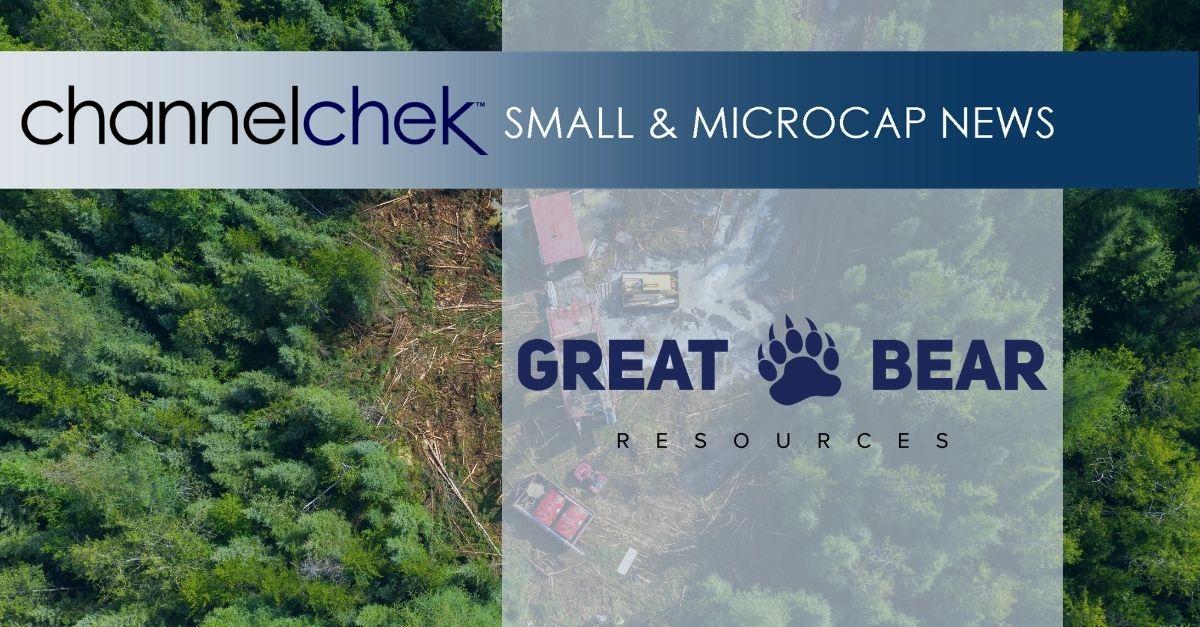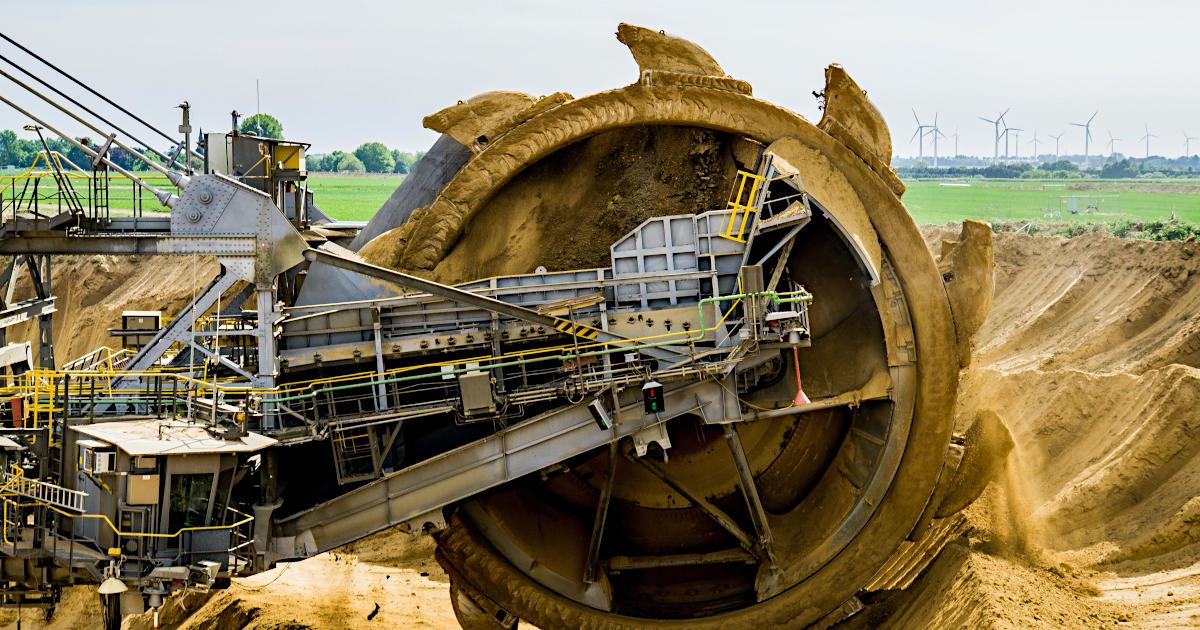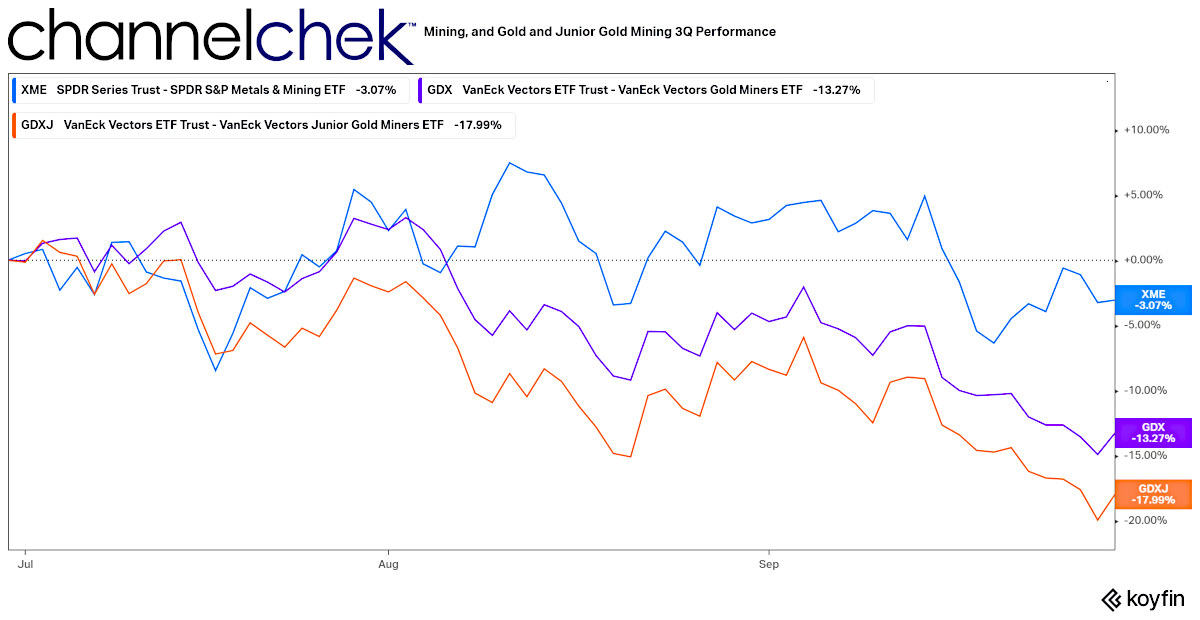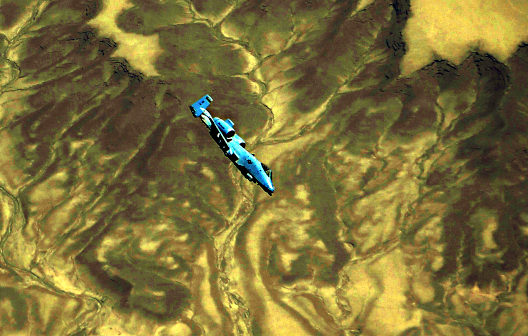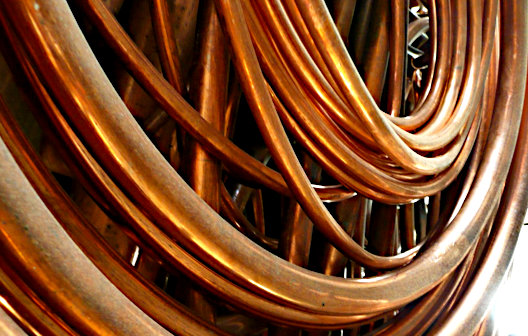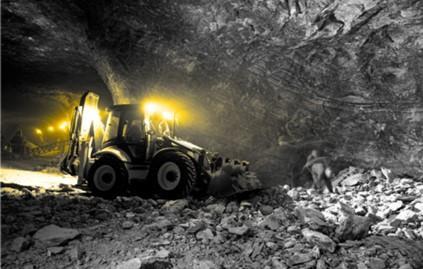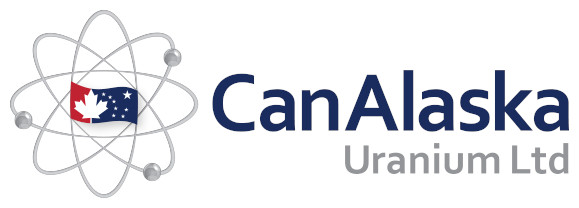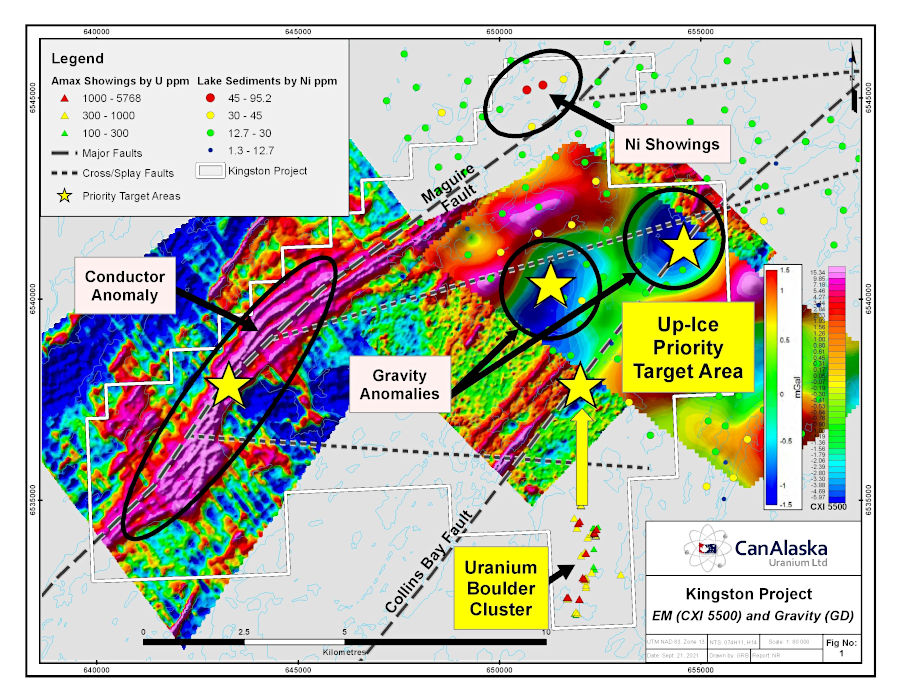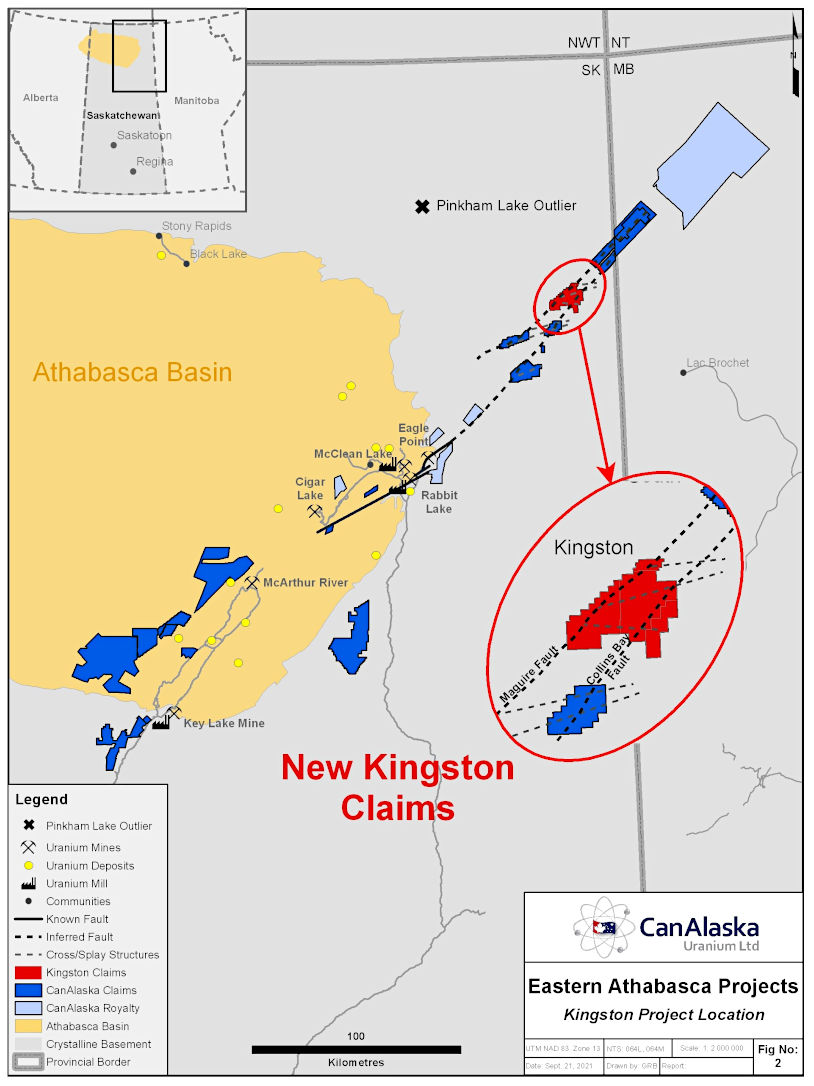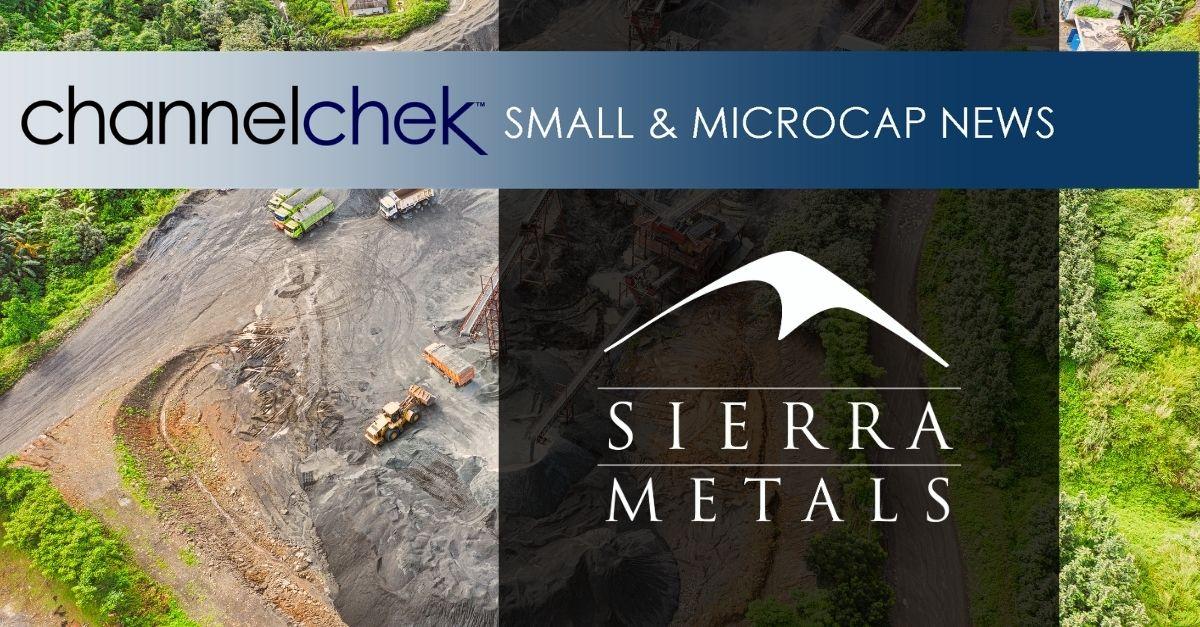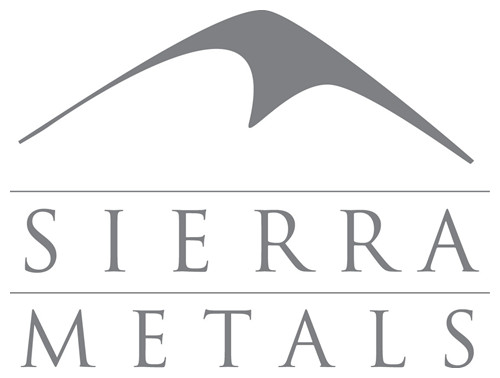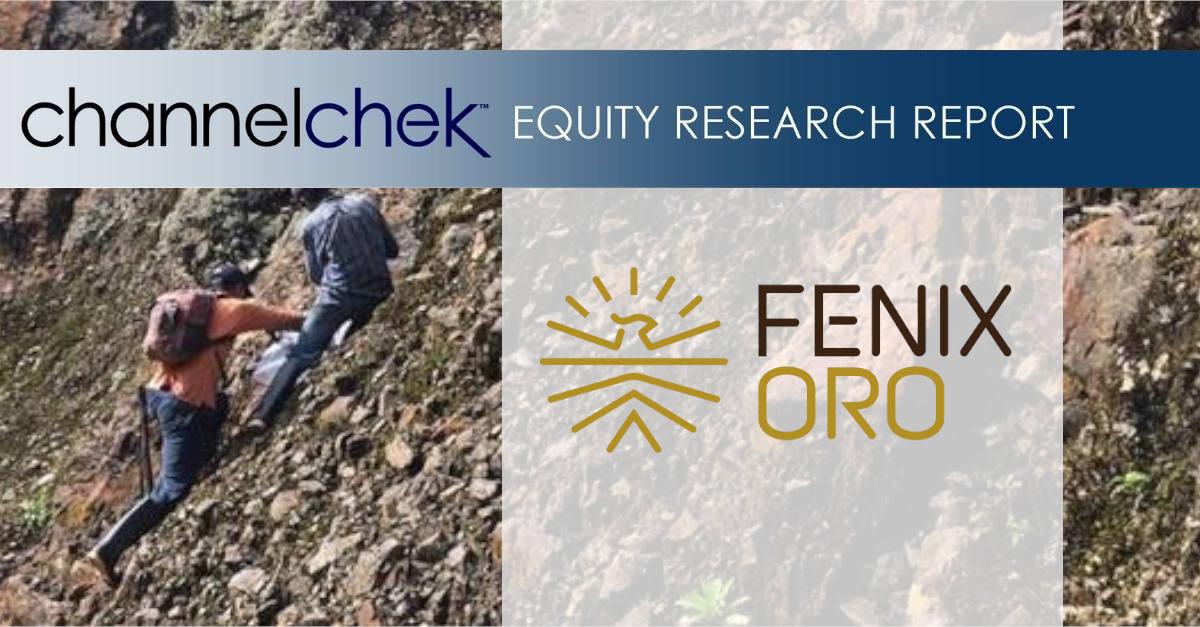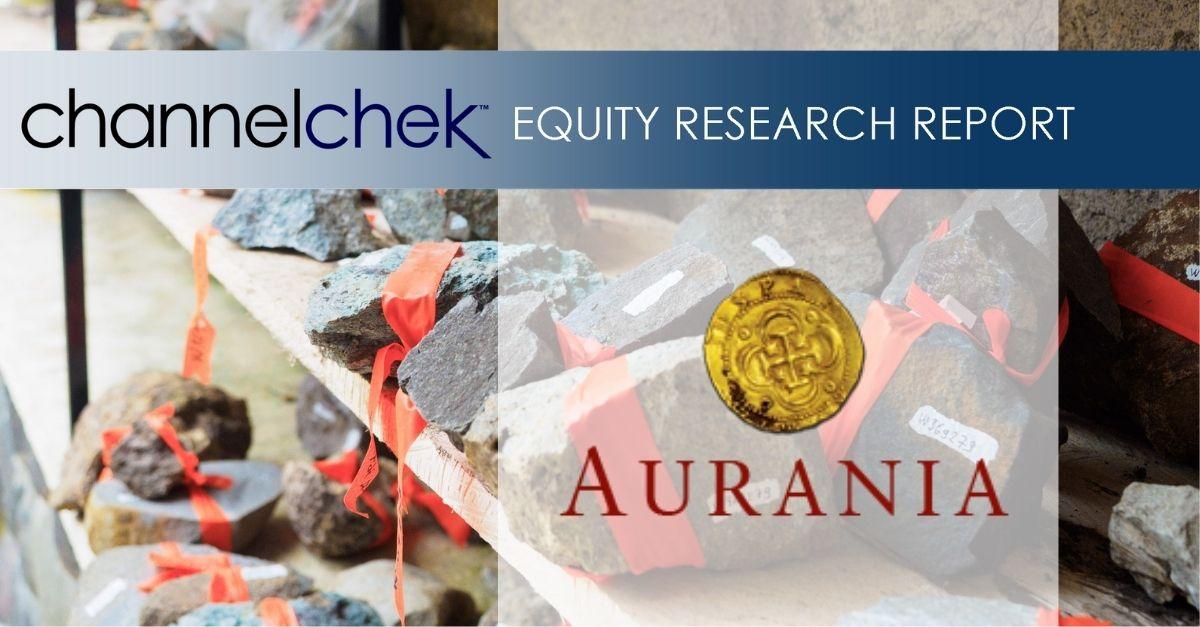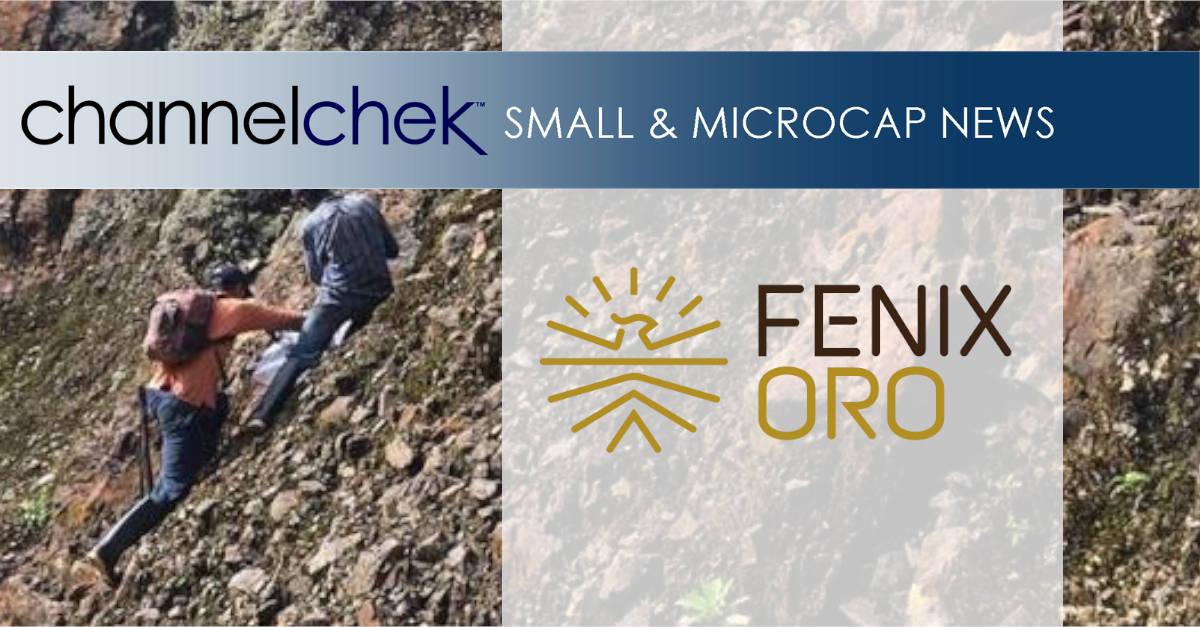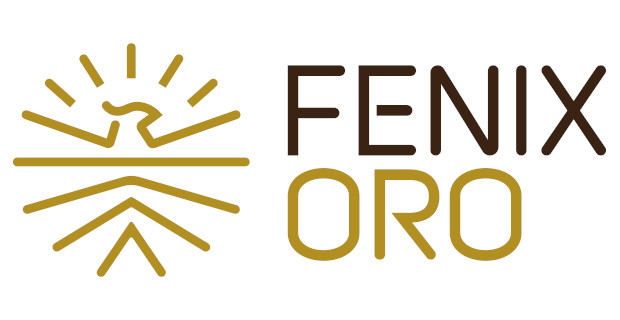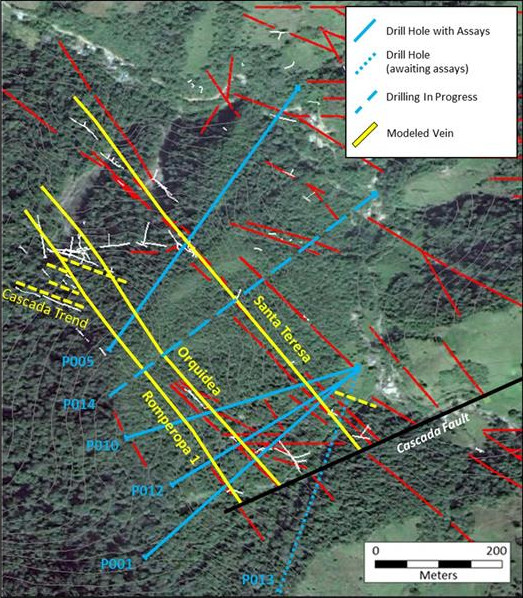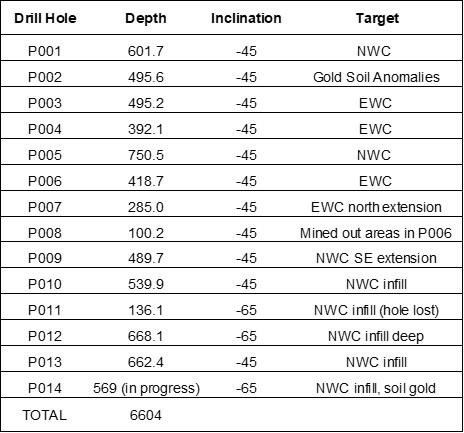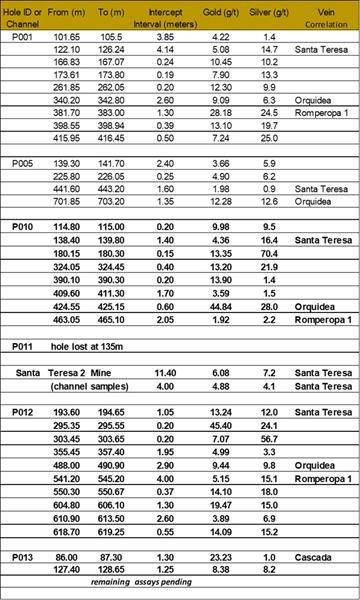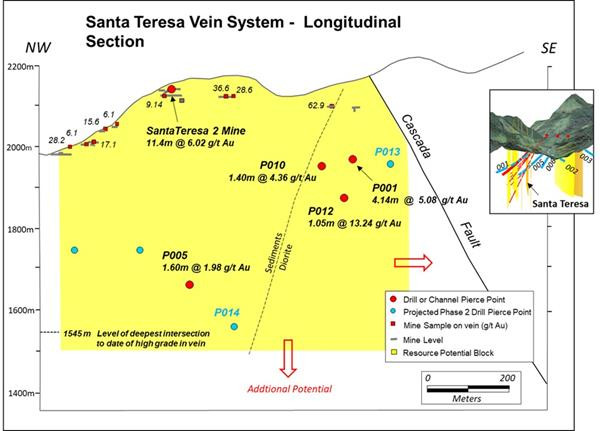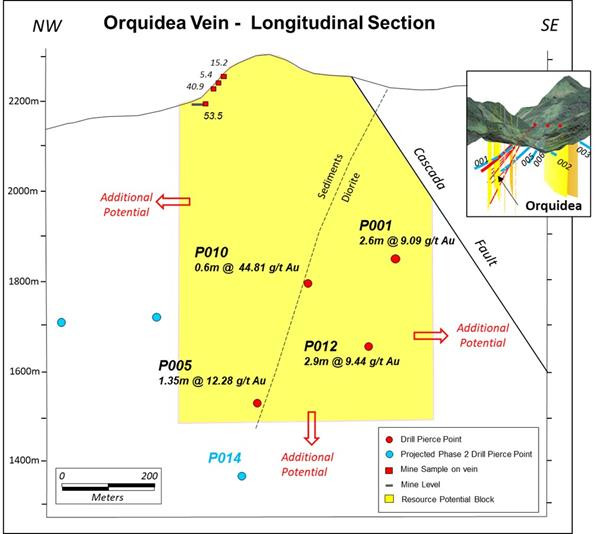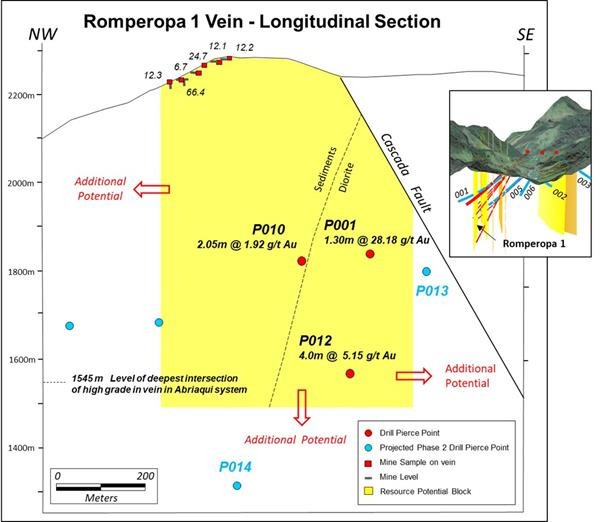
Great Bear Drills Deep LP Fault: 157.00 g/t Gold Over 1.20 m Within 11.01 g/t Gold Over 22.85 m from 678.75 m Downhole
October 4, 2021 – Vancouver, British Columbia, Canada – Great Bear Resources Ltd. (the “Company” or “Great Bear”, TSX-V: GBR; OTCQX: GTBAF) today reported results from its ongoing fully funded $45 million 2021 exploration program at its 100% owned flagship Dixie Project in the Red Lake district of Ontario.
Chris Taylor, President and CEO of Great Bear said, “Our systematic deep drilling of the LP Fault along 1.4 kilometres of strike length has successfully intersected the target geology with gold mineralization in all areas. These results establish significant continuity of both high-grade and bulk tonnage style gold over a broad area at depth, which remains open to extension in all directions. The LP Fault has no geological analogs in the Red Lake district, with the closest being the Hemlo gold deposit located near Marathon, Ontario.”
Deep LP Fault Drilling
Seven new drill holes are representative of deeper LP Fault mineralization across a broad area of 1.4 kilometres of strike length between approximately 450 and 750 metres downhole depth. Deeper drilling will continue along an additional 2.6 kilometres of strike length during the ongoing Phase 2 program.
The same pattern of high-grade domains surrounded by lower grade envelopes are observed as had previously been drilled at shallower depths. Results are provided in Table 1.
Highlights include:
- These new drill holes are not infill drilling, and significantly extend gold mineralization to depth on their respective drill sections. Figure 1, Figure 2, Figure 3 and Figure 4.
- New drill hole BR-385 intersected multiple high-grade gold domains, including 157.00 g/t gold over 1.20 metres from 696.45 to 697.65 metres downhole, within a broader interval of 41.76 g/t gold over 5.15 metres from 696.45 to 701.60 metres.
- The total mineralized interval using the same calculation criteria applied to the shallow LP Fault zone since its discovery (i.e. composite intervals cannot include more than 3 metres assaying less than 0.10 g/t gold) is 6.90 g/t gold over 36.95 metres from 673.25 to 710.20 metres downhole.
- However, given the greater depths explored by these drill holes, a more relevant interval that excludes peripheral bulk tonnage style gold mineralization and may be more representative of any future potential underground development scenarios is 11.01 g/t gold over 22.85 metres from 678.75 to 701.60 metres downhole.
- New drill hole BR-386 intersected 16.92 g/t gold over 4.90 metres from 525.00 to 529.90 metres downhole, within a broader interval of 2.21 g/t gold over 49.55 metres from 522.45 to 572.00 metres downhole.
- New drill hole BR-411 intersected 13.84 g/t gold over 3.15 metres from 459.15 to 462.30 metres downhole.
- BR-411 is significant as it intersects high-grade gold below the “Gap” area of the LP Fault, and is over 500 metres above the deepest LP Fault intercept to-date in previously reported drill hole BR-260 (March 29, 2021) which assayed 15.57 g/t gold over 3.05 metres from 942.20 to 945.25 metres downhole. More drilling is required to determine if both intercepts occur along a controlling plunge within the same high-grade gold domain.
- New drill hole BR-384 intersected multiple mineralized intervals including 50.50 g/t gold over 1.00 metre from 587.50 to 588.50 metres downhole, and 6.71 g/t gold over 6.30 metres from 687.50 to 693.80 metres downhole. The total mineralized interval was 3.97 g/t gold over 17.50 metres from 687.50 to 705.00 metres downhole.
Shallow Drill Results
Seventeen additional drill holes intersected the shallow LP Fault along 3.6 kilometres of strike length. Most of these targeted the bulk tonnage style envelope adjacent to higher-grade domains for resource delineation purposes. Maiden mineral resource estimate disclosure is planned for Q1 of 2022.
Highlights include:
- Eastern LP Fault (Viggo area) drill hole BR-379 intersected 1.84 g/t gold over 28.05 metres from 101.35 to 129.40 metres downhole. This included high-grade intervals of 15.90 g/t gold over 1.00 metre from 101.35 to 102.35 metres downhole and 28.70 g/t gold over 0.50 metres from 123.50 to 124.00 metres downhole.
- This drill hole is significant as it adds bulk tonnage style gold mineralization at shallow depths to this area. A steeply plunging area of stronger gold mineralization is currently being defined here (see news release of August 25, 2021).
- Drill holes characterizing additional shallow bulk tonnage style mineralization are summarized in Table 2 and include:
- BR-425 which intersected 1.09 g/t gold over 80.55 metres from 62.50 to 142.75 metres downhole,
- BR-441 which intersected 1.08 g/t gold over 30.25 metres from 13.00 to 43.25 metres downhole, and
- BR-443 which intersected 0.55 g/t gold over 66.20 metres from 38.50 to 104.70 metres downhole.
An additional 16 shallow drill holes were collared outside the LP Fault zone and targeted areas up to 200 metres away from the zone which may be incorporated into any future mineral resource estimation or infrastructure development planning. All holes intersected anomalous to low-grade gold mineralization. The most significant intercepts were 0.52 g/t gold over 20.00 metres from 56.50 to 76.50 metres downhole in drill hole BR-435, and 0.55 g/t gold over 26.25 metres from 10.85 to 37.10 metres downhole in drill hole BR-444. Results from this drilling are included in a separate table on the Company’s web site at www.greatbearresources.ca.
Ongoing Phase 2 LP Fault Expansion Drilling and Upcoming Reports
- With the 42 new drill holes contained in this release, Great Bear has reported 446 LP Fault drill holes. Including in-progress drill holes, Great Bear has completed 300,000 metres of drilling at the Dixie property to-date.
- Phase 1 drilling consisted of 440 LP Fault drill holes and was completed in July 2021. The program was designed to support mineral resource estimation along approximately 4 kilometres of strike length to a depth of approximately 450 metres.
- Phase 2 drilling is designed to expand LP Fault gold mineralization between approximately 450 and 900 metres depth over approximately 4 kilometres of strike length.
- Great Bear will continue Phase 2 expansion drilling with the goal of significantly expanding the drill confirmed extent of gold mineralization at the LP Fault by late 2022.
- Other Phase 2 drilling will include regional drilling of new targets, and mineral resource definition and expansion drilling of the Dixie Limb and Hinge zones. The Company is fully funded for this work.
In addition to regular releases detailing Phase 2 drill results, deliverables for 2022 are expected to include: 1) a maiden mineral resource estimate in accordance with NI 43-101 of the LP Fault zone Phase 1 drilling, 2) a Preliminary Economic Assessment (“PEA”) of the LP Fault zone, and 3) a mineral resource update which will include deeper drill results from the LP Fault, plus maiden mineral resource estimates for the Dixie Limb and Hinge zones. Further details will be provided as results continue to be received and processed.
Table 1: New deep LP Fault drill results along 1.4 kilometres of strike length.
|
Drill Hole |
From (m) |
To (m) |
Width* (m) |
Gold (g/t) |
Section |
|
|---|---|---|---|---|---|---|
|
BR-411 |
34.50 |
41.30 |
6.80 |
0.30 |
21325 |
|
|
|
and |
152.50 |
155.50 |
3.00 |
1.98 |
|
|
|
and |
184.00 |
221.60 |
37.60 |
0.34 |
|
|
|
and |
238.75 |
263.35 |
24.60 |
0.59 |
|
|
|
and |
454.60 |
466.50 |
11.90 |
3.98 |
|
|
|
and including |
459.15 |
462.30 |
3.15 |
13.84 |
|
|
BR-386 |
435.20 |
437.20 |
2.00 |
5.93 |
20875 |
|
|
|
and |
502.75 |
516.00 |
13.25 |
1.46 |
|
|
|
and |
522.45 |
572.00 |
49.55 |
2.21 |
|
|
|
including |
525.00 |
529.90 |
4.90 |
16.92 |
|
|
|
and |
648.30 |
651.15 |
2.85 |
3.13 |
|
|
BR-385 |
598.40 |
620.70 |
22.30 |
1.06 |
20800 |
|
|
|
and including |
605.80 |
606.70 |
0.90 |
9.79 |
|
|
|
and |
673.25 |
710.20 |
36.95 |
6.90 |
|
|
|
including |
678.75 |
701.60 |
22.85 |
11.01 |
|
|
|
and including |
696.45 |
701.60 |
5.15 |
41.76 |
|
|
|
and including |
696.45 |
697.65 |
1.20 |
157.00 |
|
|
|
and including |
700.60 |
701.60 |
1.00 |
25.00 |
|
|
BR-384 |
583.00 |
594.10 |
11.10 |
4.74 |
20750 |
|
|
|
including |
587.50 |
588.50 |
1.00 |
50.50 |
|
|
|
and |
602.00 |
637.00 |
35.00 |
0.33 |
|
|
|
and |
653.35 |
716.00 |
62.65 |
1.42 |
|
|
|
including |
687.50 |
705.00 |
17.50 |
3.97 |
|
|
|
and including |
687.50 |
693.80 |
6.30 |
6.71 |
|
|
|
and including |
702.55 |
705.00 |
2.45 |
6.42 |
|
|
BR-383 |
392.60 |
424.30 |
31.70 |
0.35 |
20750 |
|
|
|
including |
418.80 |
420.10 |
1.30 |
4.26 |
|
|
|
and |
509.45 |
526.00 |
16.55 |
1.47 |
|
|
|
including |
509.45 |
510.35 |
0.90 |
14.30 |
|
|
|
and including |
525.00 |
526.00 |
1.00 |
9.34 |
|
|
BR-280 |
675.00 |
685.20 |
10.20 |
0.34 |
20125 |
|
|
|
and |
741.20 |
755.40 |
14.20 |
0.22 |
|
|
|
849.85 |
851.15 |
1.30 |
1.98 |
|
|
|
BR-419 |
603.00 |
644.60 |
41.60 |
0.59 |
20075 |
|
|
|
including |
634.55 |
635.20 |
0.65 |
8.99 |
|
|
|
and |
654.00 |
656.70 |
2.70 |
9.59 |
|
|
|
including |
654.65 |
655.30 |
0.65 |
32.00 |
|
|
BR-430 |
538.85 |
557.75 |
18.90 |
1.49 |
19975 |
|
|
|
including |
550.00 |
554.00 |
4.00 |
5.09 |
|
|
|
and |
585.00 |
590.00 |
5.00 |
2.33 |
|
*Represents core length. True mineralization widths range between 65- 95% of reported intervals as they are determined by both structural analyses obtained from oriented drill core data and orientations of individual high grade domains and bulk tonnage domains. Mineralized domains vary in strike between 340 to 270 degrees and dip between 85 to 65 degrees to the north. All drillholes intersect both high grade and bulk tonnage domains and often intersect multiple domains resulting in a range of true widths within the same drillhole.
Table 2: Shallow drill results along 3.6 kilometres of strike length targeting the bulk tonnage mineralized envelope that surrounds the high-grade gold domains.
|
Drill Hole |
From (m) |
To (m) |
Width* (m) |
Gold (g/t) |
Section |
|
|---|---|---|---|---|---|---|
|
BR-424 |
|
278.15 |
286.00 |
7.85 |
0.58 |
22675 |
|
|
including |
279.80 |
280.20 |
0.40 |
6.80 |
|
|
BR-442 |
|
31.00 |
32.00 |
1.00 |
6.89 |
22350 |
|
|
and |
51.70 |
85.65 |
33.95 |
0.40 |
|
|
BR-443 |
38.50 |
104.70 |
66.20 |
0.55 |
22300 |
|
|
including |
69.90 |
85.85 |
15.95 |
1.18 |
||
|
BR-421 |
|
385.50 |
456.85 |
71.35 |
0.68 |
22275 |
|
|
including |
420.00 |
431.50 |
11.50 |
1.82 |
|
|
|
and including |
422.30 |
425.55 |
3.25 |
3.36 |
|
|
BR-440 |
71.00 |
95.80 |
24.80 |
0.72 |
22225 |
|
|
|
including |
82.30 |
91.30 |
9.00 |
1.50 |
|
|
|
and including |
88.30 |
91.30 |
3.00 |
3.06 |
|
|
BR-422 |
|
60.00 |
61.10 |
1.10 |
7.12 |
22225 |
|
|
and |
310.40 |
323.60 |
13.20 |
0.60 |
|
|
BR-423 |
|
199.90 |
222.30 |
22.40 |
0.54 |
22225 |
|
BR-441 |
|
12.25 |
55.40 |
43.15 |
0.86 |
22175 |
|
|
including |
13.00 |
43.25 |
30.25 |
1.08 |
|
|
|
and including |
22.00 |
33.00 |
11.00 |
2.22 |
|
|
|
and including |
29.00 |
33.00 |
4.00 |
4.19 |
|
|
BR-412 |
|
119.20 |
121.10 |
1.90 |
3.65 |
21375 |
|
|
including |
120.10 |
121.10 |
1.00 |
6.07 |
|
|
BR-417 |
|
49.00 |
82.95 |
33.95 |
0.31 |
21225 |
|
BR-433 |
53.60 |
88.00 |
34.40 |
0.34 |
21125 |
|
|
|
including |
75.50 |
87.00 |
11.50 |
0.55 |
|
|
|
and |
168.90 |
206.30 |
37.40 |
0.42 |
|
|
|
including |
175.95 |
185.35 |
9.40 |
1.01 |
|
|
BR-432 |
51.10 |
76.00 |
24.90 |
0.34 |
21125 |
|
|
and |
108.40 |
116.90 |
8.50 |
1.13 |
||
|
BR-431 |
25.05 |
75.00 |
49.95 |
0.33 |
21125 |
|
|
including |
54.20 |
70.85 |
16.65 |
0.52 |
||
|
BR-425 |
|
62.20 |
142.75 |
80.55 |
1.09 |
20525 |
|
|
including |
70.15 |
78.70 |
8.55 |
5.86 |
|
|
BR-323 |
|
154.80 |
163.00 |
8.20 |
0.31 |
20225 |
|
|
|
176.80 |
197.40 |
20.60 |
0.33 |
|
|
|
including |
176.80 |
178.60 |
1.80 |
1.84 |
|
|
BR-378 |
|
172.50 |
182.00 |
9.50 |
0.46 |
18875 |
|
|
including |
191.00 |
192.00 |
1.00 |
2.02 |
|
|
BR-379 |
83.20 |
86.20 |
3.00 |
0.73 |
18725 |
|
|
|
and |
101.35 |
129.40 |
28.05 |
1.84 |
|
|
|
including |
101.35 |
124.00 |
22.65 |
2.22 |
|
|
|
and including |
101.35 |
111.30 |
9.95 |
2.92 |
|
|
|
including |
101.35 |
102.35 |
1.00 |
15.90 |
|
|
|
and |
123.50 |
124.00 |
0.50 |
28.70 |
|
*Represents core length. True mineralization widths range between 65- 95% of reported intervals as they are determined by both structural analyses obtained from oriented drill core data and orientations of individual high grade domains and bulk tonnage domains. Mineralized domains vary in strike between 340 to 270 degrees and dip between 85 to 65 degrees to the north. All drillholes intersect both high grade and bulk tonnage domains and often intersect multiple domains resulting in a range of true widths within the same drillhole.
Figure 1: LP Fault long section showing only high-grade gold domain intercepts. Gold intercepts from the surrounding bulk tonnage style domains have been removed for clarity. New drill results inside of the high-grade domains are highlighted.
Figure 2: Cross section 20900 including new deep drill results. Images are of selected core intervals and do not represent all gold mineralization on the property.
Figure 3: Cross section 20825 including new deep drill results. Images are of selected core intervals and do not represent all gold mineralization on the property.
Figure 4: Cross section 20775 including new deep drill results. Images are of selected core intervals and do not represent all gold mineralization on the property.
All LP Fault drill hole highlighted assays, plus drill collar locations and orientations can be downloaded at the Company’s web site.
Drill collar location, azimuth and dip for drill holes targeting the LP Fault zone included in this release are provided in the table below (UTM zone 15N, NAD 83):
|
Drill Hole |
Easting |
Northing |
Elevation |
Length |
Dip |
Azimuth |
|---|---|---|---|---|---|---|
|
BR-280 |
457638 |
5634448 |
373 |
1053 |
-60 |
213 |
|
BR-323 |
457356 |
5634144 |
355 |
309 |
-44 |
203 |
|
BR-378 |
458589 |
5633576 |
360 |
350 |
-55 |
213 |
|
BR-379 |
458686 |
5633455 |
365 |
270 |
-55 |
212 |
|
BR-383 |
456650 |
5633873 |
358 |
594 |
-44 |
25 |
|
BR-384 |
456650 |
5633873 |
358 |
822 |
-55 |
27 |
|
BR-385 |
456564 |
5633897 |
359 |
756 |
-53 |
26 |
|
BR-386 |
456529 |
5633987 |
363 |
765 |
-57 |
28 |
|
BR-411 |
456221 |
5634368 |
365 |
501 |
-46 |
37 |
|
BR-412 |
456231 |
5634453 |
362 |
450 |
-47 |
37 |
|
BR-417 |
456423 |
5634421 |
359 |
234 |
-54 |
210 |
|
BR-419 |
457689 |
5634363 |
369 |
790 |
-59 |
207 |
|
BR-421 |
455733 |
5635325 |
377 |
570 |
-58 |
226 |
|
BR-422 |
455481 |
5635448 |
386 |
429 |
-58 |
225 |
|
BR-423 |
455430 |
5635385 |
386 |
381 |
-58 |
224 |
|
BR-424 |
455349 |
5635498 |
389 |
364 |
-56 |
224 |
|
BR-425 |
456908 |
5633934 |
357 |
300 |
-54 |
210 |
|
BR-430 |
457779 |
5634318 |
364 |
810 |
-60 |
207 |
|
BR-431 |
456467 |
5634343 |
359 |
207 |
-55 |
211 |
|
BR-432 |
456492 |
5634391 |
358 |
231 |
-56 |
214 |
|
BR-433 |
456517 |
5634430 |
358 |
282 |
-55 |
214 |
|
BR-440 |
455561 |
5635012 |
376 |
201 |
-61 |
227 |
|
BR-441 |
455635 |
5635011 |
376 |
273 |
-60 |
228 |
|
BR-442 |
455507 |
5635173 |
379 |
222 |
-56 |
228 |
|
BR-443 |
455549 |
5635146 |
378 |
261 |
-61 |
228 |
About the Dixie Project
The 100% owned flagship Dixie project boasts one of the largest recent gold discoveries in a Canadian mining jurisdiction. Proximal to major infrastructure near the town of Red Lake, Ontario, the Dixie property comprises over 91.4 square kilometres of contiguous claims that extend over 22 kilometres with a paved highway and provincial power and natural gas lines. The property also hosts a network of well-maintained logging roads which facilitate access.
The 23 high-grade domains discussed in this release are structurally and geologically distinctive from the surrounding lower grade, bulk tonnage style gold mineralization. Together, they span a strike length of 4.2 kilometres and occur within larger stratigraphically controlled lower grade domains. They are characterized by high degrees of strain and/or transposed quartz vein zones following two distinct structural fabrics and transition from upper greenschist to lower amphibolite facies metamorphism. Gold in the high-grade domains is generally observed as free gold, is often transposed into, and overgrows the dominant structural fabrics, and is higher-grade on average than the surrounding bulk tonnage gold zones.
To date, Great Bear has completed a total of 672 drill holes, identifying three high-grade gold discoveries. The most significant discovery is the large-scale “LP Fault” zone, which comprises high-grade disseminated gold mineralization within broad moderate-to-lower-grade envelopes in felsic volcanic and sediment units. LP Fault drilling has identified gold mineralization along 11 kilometres of strike length to date, and a detailed drill grid is being completed along approximately 4 kilometres of strike length. The nearby “Hinge” and “Limb” gold zones are more characteristic of the renowned Red Lake mined deposits, comprising gold-bearing quartz veins and silica-sulphide replacement zones hosted by mafic volcanic units. Over 80% of the Company’s drill holes into the LP Fault, Dixie Limb and Hinge zones contain visible gold mineralization. Gold occurs mainly as free gold, neither bound to nor within sulphide minerals.
Great Bear adheres to industry-leading quality assurance / quality control (QA/QC) practices in data collection, analysis and disclosure, and detailed assays including all historical LP Fault drill hole data are available on the Company’s website at https://greatbearresources.ca/projects/overview/dixie-project-data/.
About Great Bear
Great Bear Resources Ltd. is a Vancouver-based gold exploration company focused on advancing its 100% owned Dixie project in Northwestern Ontario, Canada. A significant exploration drill program is currently underway to define the mineralization within a large-scale, high-grade disseminated gold discovery made in 2019, the LP Fault. Additional exploration drilling is also in progress to expand and infill nearby high-grade gold zones, as well as to test new regional targets. The Company is currently in the process of compiling all historical data together with incoming assay results, with the goal of publishing an initial NI 43-101 compliant multi-million ounce mineral resource estimate for the Dixie project in early 2022.
Great Bear is a committed partner to all stakeholders, with a long-term vision of sustainable exploration to advance the Dixie project in a manner that demonstrates good stewardship of land, operational excellence and accountability.
QA/QC and Core Sampling Protocols
Drill core is logged and sampled in a secure core storage facility located in Red Lake Ontario. Core samples from the program are cut in half, using a diamond cutting saw, and are sent to Activation Laboratories in Ontario, an accredited mineral analysis laboratory, for analysis. All samples are analysed for gold using standard Fire Assay-AA techniques. Samples returning over 10.0 g/t gold are analysed utilizing standard Fire Assay-Gravimetric methods. Pulps from approximately 5% of the gold mineralized samples are submitted for check analysis to a second lab. Selected samples are also chosen for duplicate assay from the coarse reject of the original sample. Selected samples with visible gold are also analyzed with a standard 1 kg metallic screen fire assay. Certified gold reference standards, blanks and field duplicates are routinely inserted into the sample stream, as part of Great Bear’s quality control/quality assurance program (QAQC). No QAQC issues were noted with the results reported herein.
Qualified Person and NI 43-101 Disclosure
Mr. R. Bob Singh, P.Geo, VP Exploration, and Ms. Andrea Diakow P.Geo, VP Projects for Great Bear are the Qualified Persons as defined by National Instrument 43-101 responsible for the accuracy of technical information contained in this news release.
ON BEHALF OF THE BOARD
“Chris Taylor”
Chris Taylor, President and CEO
Investor Inquiries:
Ms. Jenni Piette,
Director, Sustainability and Stakeholder Relations
Tel: 604-646-8354
info@greatbearresources.ca
www.greatbearresources.ca
Cautionary note regarding forward-looking statements
This release contains certain “forward looking statements” and certain “forward-looking information” as defined under applicable Canadian and U.S. securities laws. Forward-looking statements and information can generally be identified by the use of forward-looking terminology such as “may”, “will”, “should”, “expect”, “intend”, “estimate”, “anticipate”, “believe”, “continue”, “plans” or similar terminology. The forward-looking information contained herein is provided for the purpose of assisting readers in understanding management’s current expectations and plans relating to the future. Readers are cautioned that such information may not be appropriate for other purposes.
Forward-looking information are based on management of the parties’ reasonable assumptions, estimates, expectations, analyses and opinions, which are based on such management’s experience and perception of trends, current conditions and expected developments, and other factors that management believes are relevant and reasonable in the circumstances, but which may prove to be incorrect.
Such factors, among other things, include: impacts arising from the global disruption caused by the Covid-19 coronavirus outbreak, business integration risks; fluctuations in general macroeconomic conditions; fluctuations in securities markets; fluctuations in spot and forward prices of gold or certain other commodities; change in national and local government, legislation, taxation, controls, regulations and political or economic developments; risks and hazards associated with the business of mineral exploration, development and mining (including environmental hazards, industrial accidents, unusual or unexpected formations pressures, cave-ins and flooding); discrepancies between actual and estimated metallurgical recoveries; inability to obtain adequate insurance to cover risks and hazards; the presence of laws and regulations that may impose restrictions on mining; employee relations; relationships with and claims by local communities and indigenous populations; availability of increasing costs associated with mining inputs and labour; the speculative nature of mineral exploration and development (including the risks of obtaining necessary licenses, permits and approvals from government authorities); and title to properties.
Great Bear undertakes no obligation to update forward-looking information except as required by applicable law. Such forward-looking information represents management’s best judgment based on information currently available. No forward-looking statement can be guaranteed and actual future results may vary materially. Accordingly, readers are advised not to place undue reliance on forward-looking statements or information.
